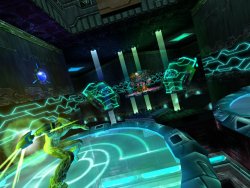DroneZ
Dronez is one of NVIDIA's GeForce3 showcase games, that has been opened for download to press. Some doubts have been cast as to what the performance of newer 'next gen' game would be like on a card such as KYRO, and seeing a NVIDIA appear to endorse this as one such 'next gen' title I figured I'd give it a whirl on KYRO.
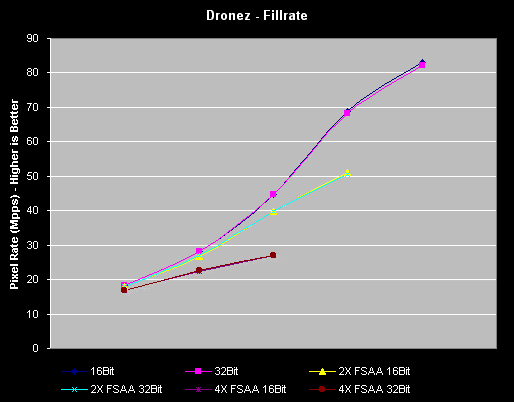
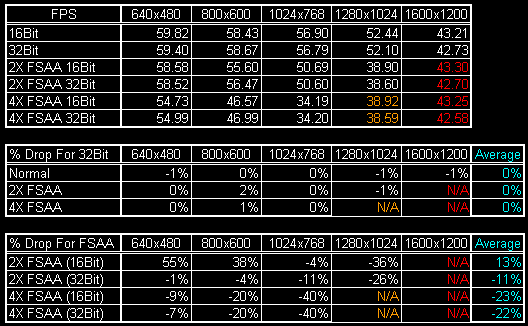
Well, immediately, the most obvious thing that strikes you is that this game is very Geometry limited on this system, which is no surprise seeing as GeForce3's Vertex Shaders were targeted for this game. However, this system appears to top out at just below 60FPS, which considering the CPU used here wouldn't be considered top end anymore, is not at all bad in my opinion, especially considering that the KYROII Vivid!XS is still getting aver 55FPS at 1024x768x32. I was quite surprised to note that even at high resolutions such as 1600x1200, or with FSAA enabled, KYROII was still able to maintain a reasonable FPS, which would indicate the games isn't that fillrate limited.
As we can see enabling 32bit color doesn't really seem to make that much difference in this title, presumably this could be because it's mainly CPU limited.
Obviously KYROII is not able to reproduce the Pixel Shader elements that are used in the game, however having seen screenshots of the Pixel Shaders enabled on this title I'm wondering what the Pixels Shaders appear to be doing that Dot3 bump couldn't.
KYROII's feature set can help with the running of titles such as this, and other future titles, perhaps more than some traditionals may be able to. For instance, it's quite likely that this game is utilizing GeForce3's ability to texture 4 layers per pixel - which KYRO can take advantage of as well, with its 8 layer multitexturing; other cards will have to fall back on multipass rendering when more texture layers are used then the number of texture units the chip has available has been exceeded. DroneZ also appears to feature a lot of Alpha textures; although currently PowerVR systems are not able to cull textures that have alphas applied, the use of Alphas is still faster than on a traditional renderer because the alpha blending will occur at the tile level, rather than having to retrieve data from the external frame buffer which uses bandwidth. Needless to say PowerVR's deferred rending will also play a useful role.
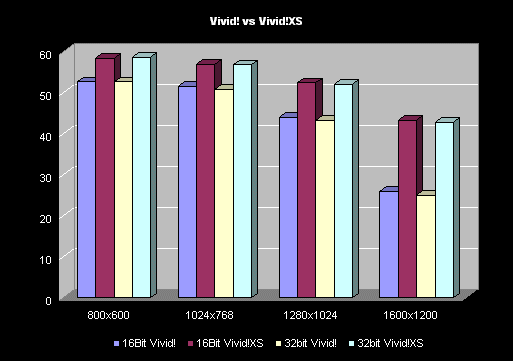
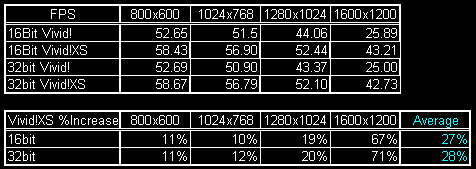
Comparing Vivid! KYRO and Vivid!XS KYROII we can see that the Vivid! is far more fillrate constrained. KYROII is also appears to be giving a better performance increase than its pure fillrate advantage would suggest it should.
Below is a sample image of DroneZ running in 1024x768x32 @4XFSAA taken using the KYROII Vivid!XS.

